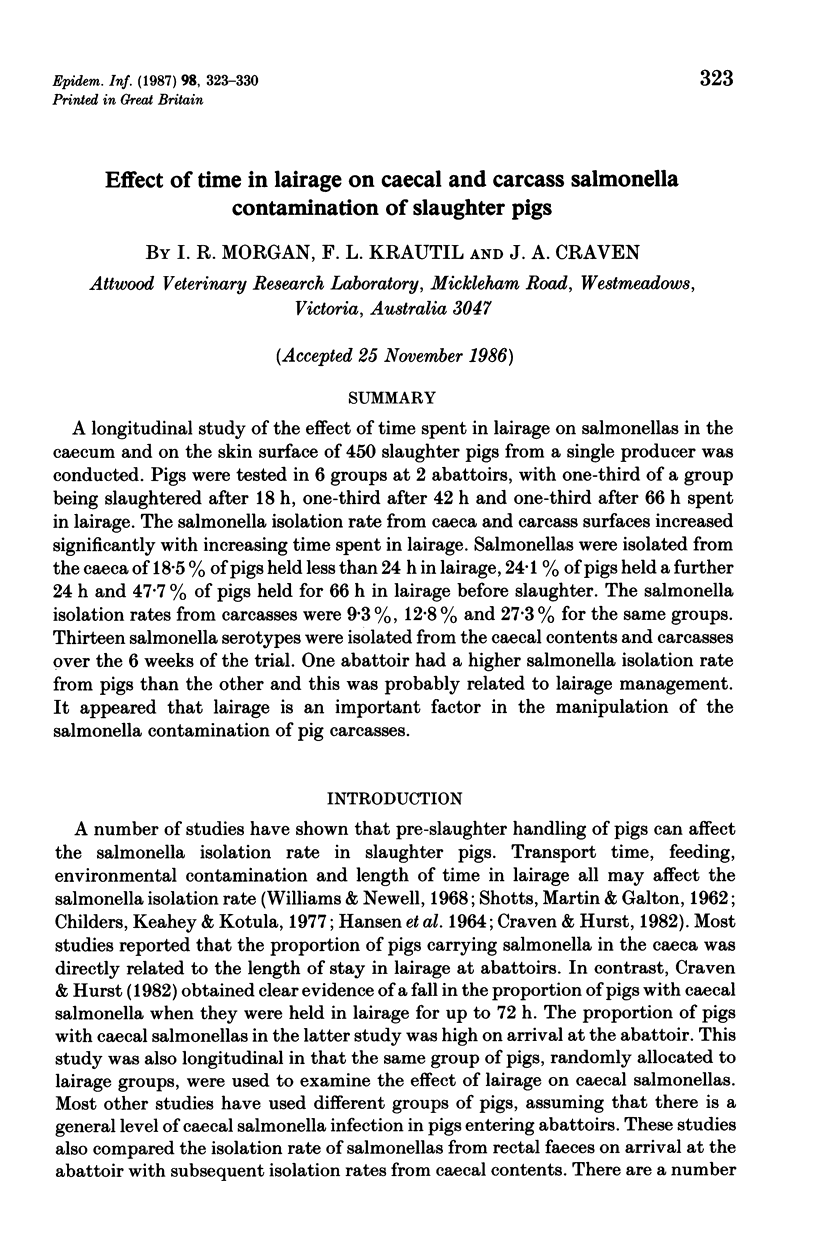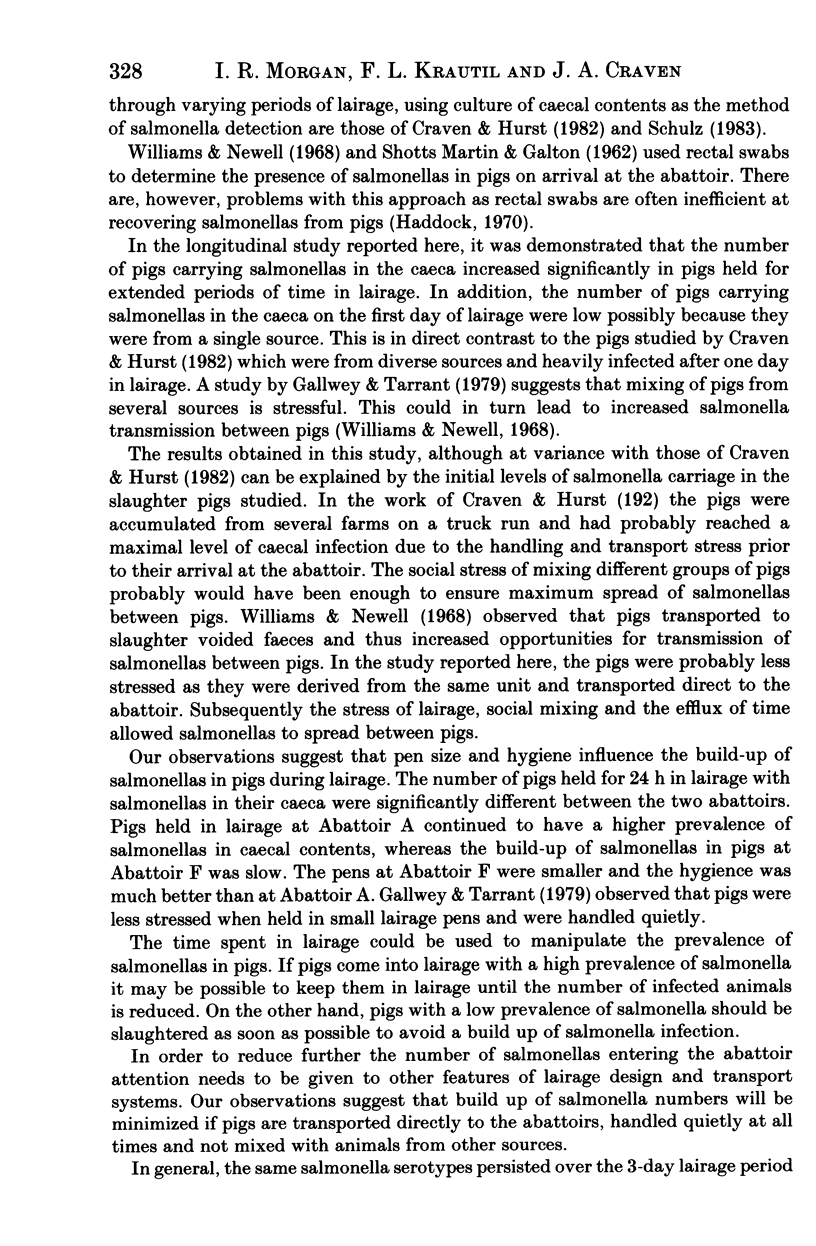Abstract
A longitudinal study of the effect of time spent in lairage on salmonellas in the caecum and on the skin surface of 450 slaughter pigs from a single producer was conducted. Pigs were tested in 6 groups at 2 abattoirs, with one-third of a group being slaughtered after 18 h, one-third after 42 h and one-third after 66 h spent in lairage. The salmonella isolation rate from caeca and carcass surfaces increased significantly with increasing time spent in lairage. Salmonellas were isolated from the caeca of 18.5% of pigs held less than 24 h in lairage, 24.1% of pigs held a further 24 h and 47.7% of pigs held for 66 h in lairage before slaughter. The salmonella isolation rates from carcasses were 9.3%, 12.8% and 27.3% for the same groups. Thirteen salmonella serotypes were isolated from the caecal contents and carcasses over the 6 weeks of the trial. One abattoir had a higher salmonella isolation rate from pigs than the other and this was probably related to lairage management. It appeared that lairage is an important factor in the manipulation of the salmonella contamination of pig carcasses.
Full text
PDF







Selected References
These references are in PubMed. This may not be the complete list of references from this article.
- Childers A. B., Keahey E. E., Kotula A. W. Reduction of Salmonella and fecal contamination of pork during swine slaughter. J Am Vet Med Assoc. 1977 Dec 1;171(11):1161–1164. [PubMed] [Google Scholar]
- Craven J. A., Hurst D. B. The effect of time in lairage on the frequency of salmonella infection in slaughtered pigs. J Hyg (Lond) 1982 Feb;88(1):107–111. doi: 10.1017/s0022172400069953. [DOI] [PMC free article] [PubMed] [Google Scholar]
- HANSEN R., ROGERS R., EMGE S., JACOBS N. J. INCIDENCE OF SALMONELLA IN THE HOG COLON AS AFFECTED BY HANDLING PRACTICES PRIOR TO SLAUGHTER. J Am Vet Med Assoc. 1964 Jul 15;145:139–140. [PubMed] [Google Scholar]
- Haddock R. L. Efficacy of examining rectal swabs to detect swine Salmonella carriers. Am J Vet Res. 1970 Aug;31(8):1509–1512. [PubMed] [Google Scholar]
- Vassiliadis P., Kalapothaki V., Trichopoulos D., Mavrommatti C., Serie C. Improved isolation of Salmonellae from naturally contaminated meat products by using Rappaport-Vassiliadis enrichment broth. Appl Environ Microbiol. 1981 Oct;42(4):615–618. doi: 10.1128/aem.42.4.615-618.1981. [DOI] [PMC free article] [PubMed] [Google Scholar]
- Williams L. P., Jr, Newell K. W. Sources of salmonellas in market swine. J Hyg (Lond) 1968 Jun;66(2):281–293. doi: 10.1017/s0022172400041140. [DOI] [PMC free article] [PubMed] [Google Scholar]


